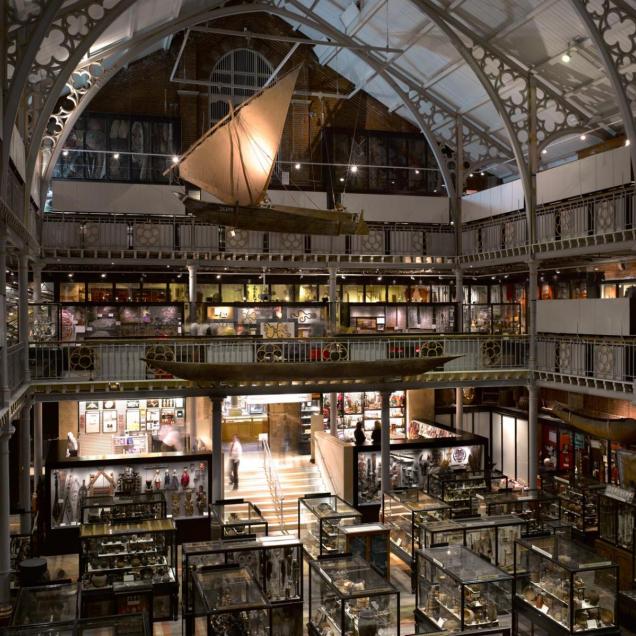

Pringle Richards Sharratt Architects’ refurbishment of Oxford’s Pitt Rivers Museum evades the vogue for dumbing down our cultural wonders
What Pringle Richards Sharratt haven’t done to the Pitt Rivers Museum, secreted behind Oxford’s University Museum of Natural History, is every bit as important as what they have done. They’ve made this enchanting museum more useful for staff and visitors, and they haven’t stripped an ounce of character from this cabinet of global curiosities.
This makes the reopened Pitt Rivers especially important at a time when so many museums are being robbed of their character and collections to make them “accessible��? to visitors for whom Peppa Pig is assumed to be as taxing as Tarkovsky. Recent visits to the National Railway Museum in York and the Cité du Train in Mulhouse (until recently, the French National Railway Museum) have served to confirm my worst suspicions. In both cases, exhibits many visitors might have travelled a long way to see have been squirreled away and replaced by the sort of “son et lumière��? stuff that makes Blackpool’s illuminations seem numinous.
Where visitors to museums were once expected to enjoy looking at exhibits, today they get fewer things to see but more audio guides, interpretation centres, kids zones, paninis and novelty keyrings — and are rushed out of the door as quickly as possible. The theory is that all this junk boosts visitor numbers.
Many of the world’s best loved museums, though, are those that enjoy showing visitors as many wonderful things as they’re able to. Pitt Rivers, with cabinets stuffed full of artefacts often described as being something to do with “fertility rites��? (that is, no one has a clue what they’re for), is a happy case — in fact dozens of cases — in point.
So too is Sir John Soane’s Museum, now about to get even better with plans to recreate the architect’s private living quarters, along with the Ipswich Museum and its extraordinary collection of stuffed animals, the Thorvaldsens Museum in Copenhagen, Marshall Mannerheim’s house in Helsinki, the Museum of the Revolution in Havana and... well, I’m sure you have your own special list that you could add to mine.
The trick for architects is surely to enhance collections and displays in old museums without whitewashing over their endearing qualities. The Soane aside, architects have little control over museum content. What they can do though is to suggest that the “accessibility��? route is not necessarily the best one. If they’re very lucky, they might even get to design the spirit as well as the structure of a brand new museum. Few architects have done this better in recent years than Daniel Libeksind, whose empty Jewish Museum in Berlin had a power to haunt the soul, dispelled only when permanent exhibits were installed in a spirit of misplaced “accessibility��?.
Museums should be places, like the Pitt Rivers, where our knowledge and imagination are extended and excited, and not curtailed, packaged and marketed as if we were wholly dim.
Link: Building Design 17th April 2009
© Building Design 2009